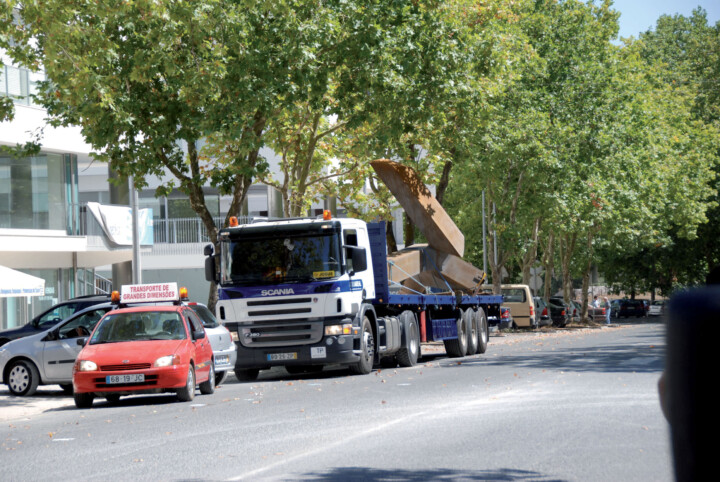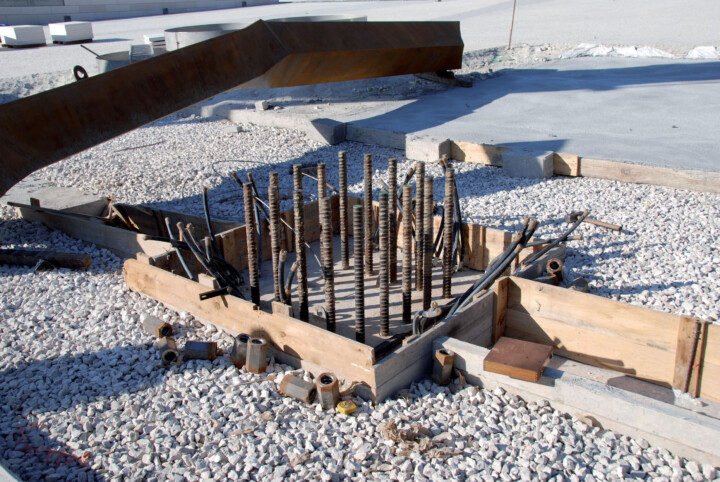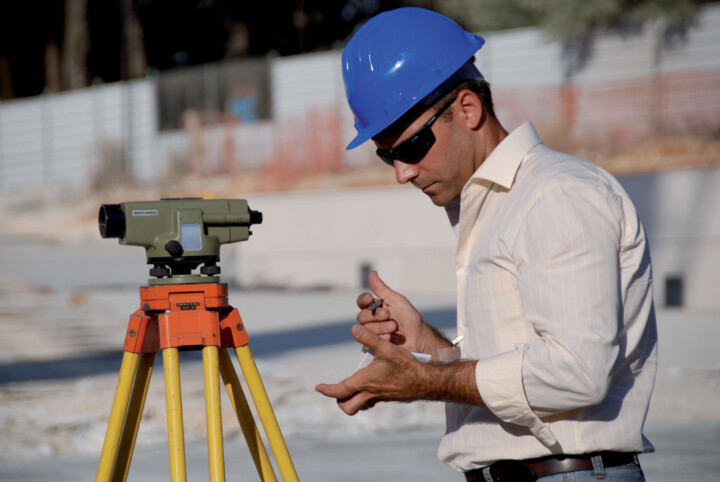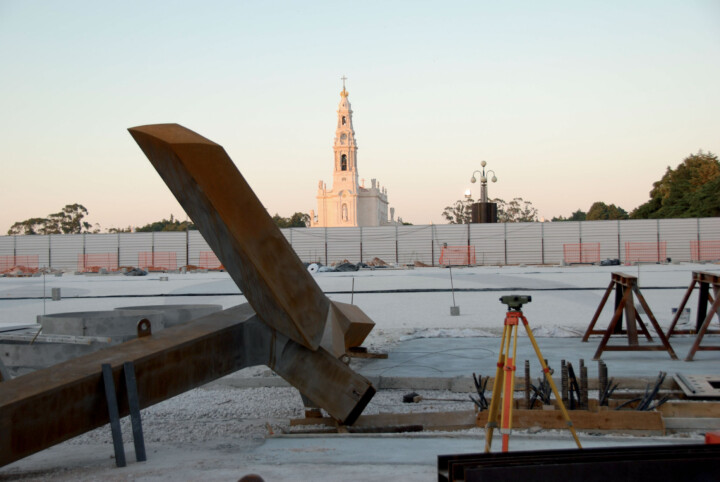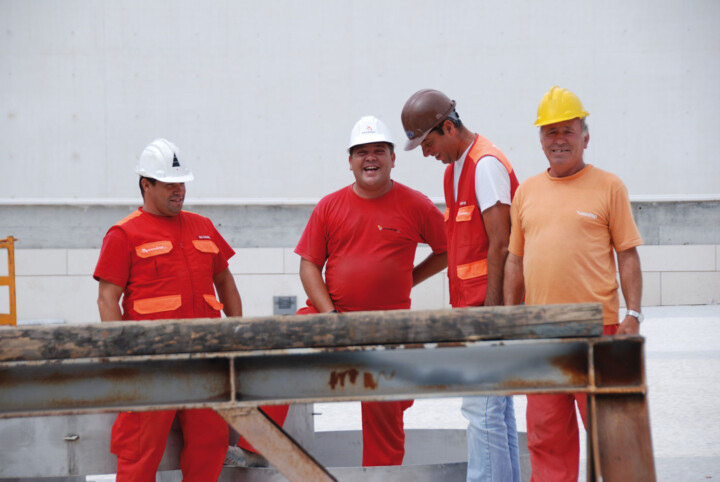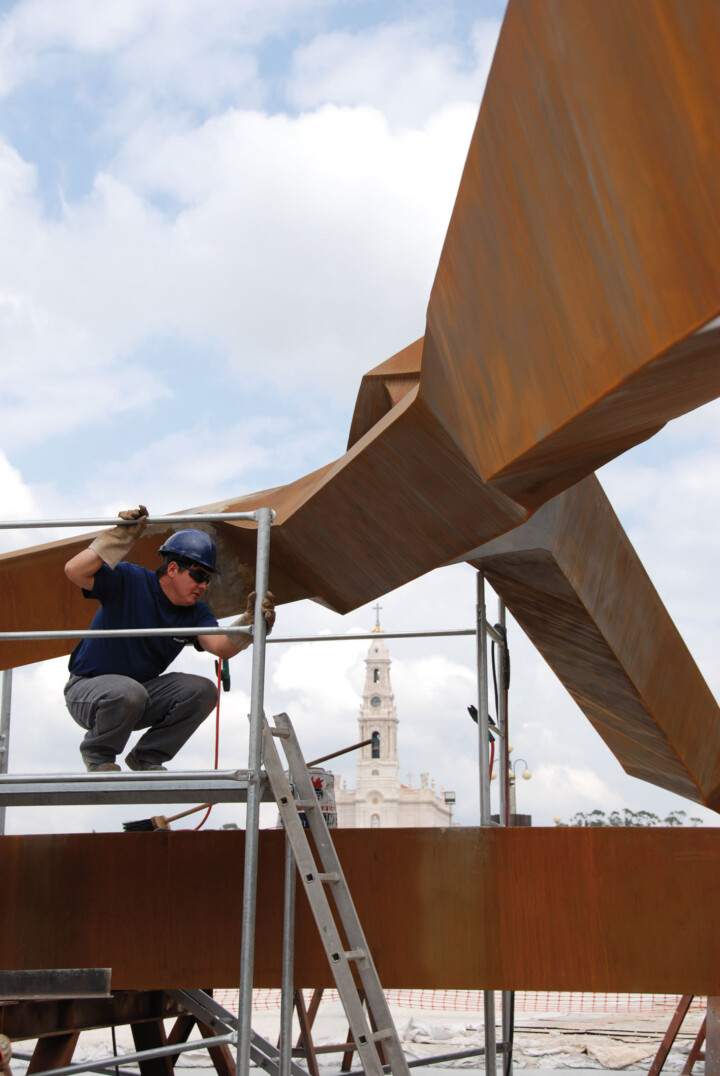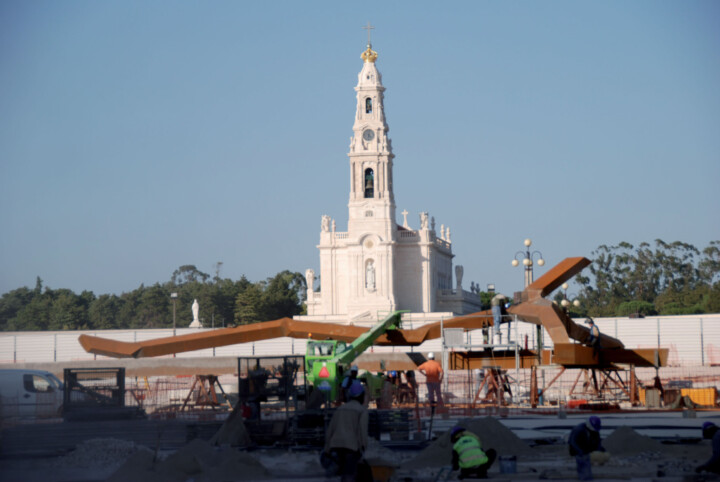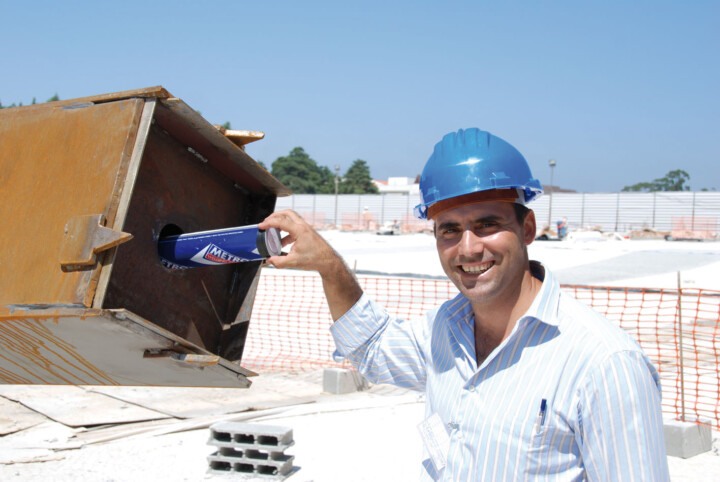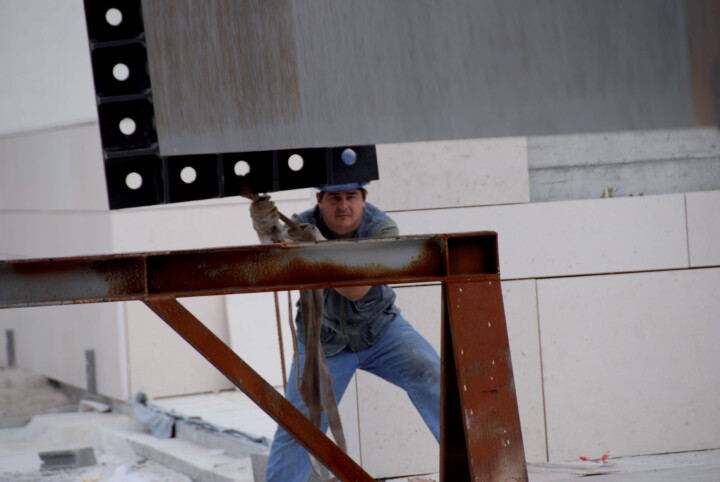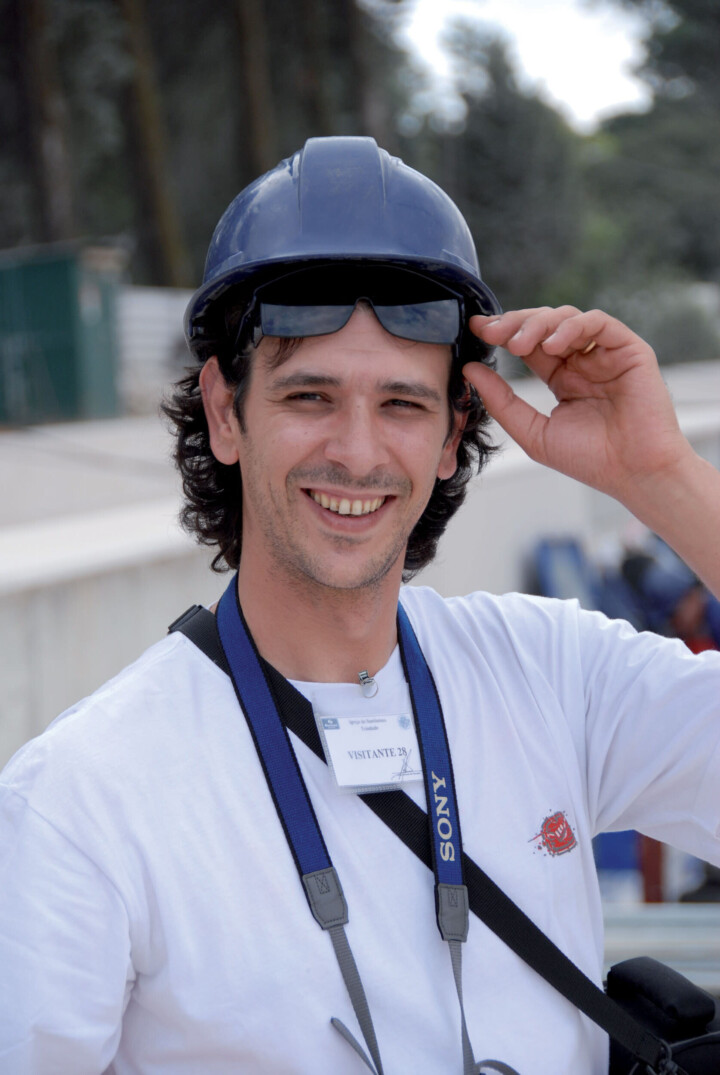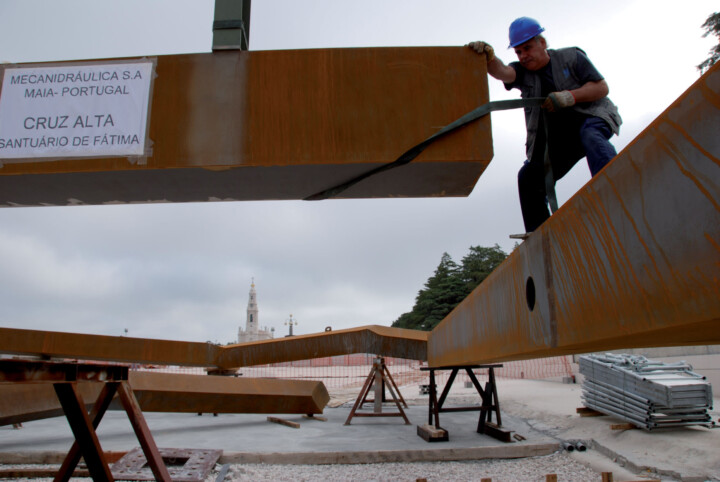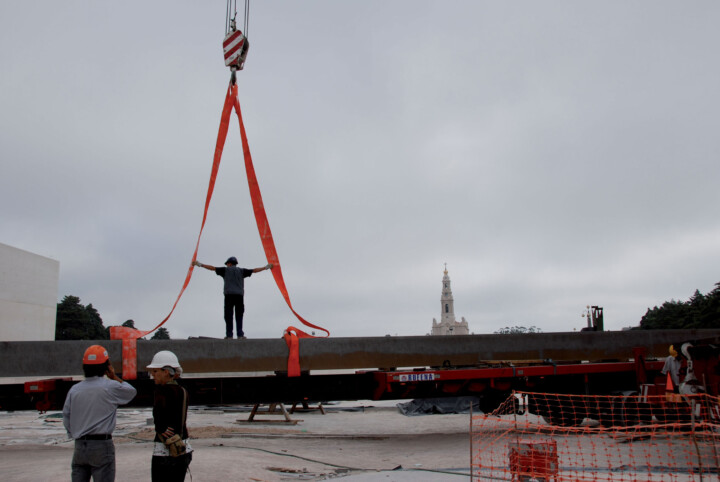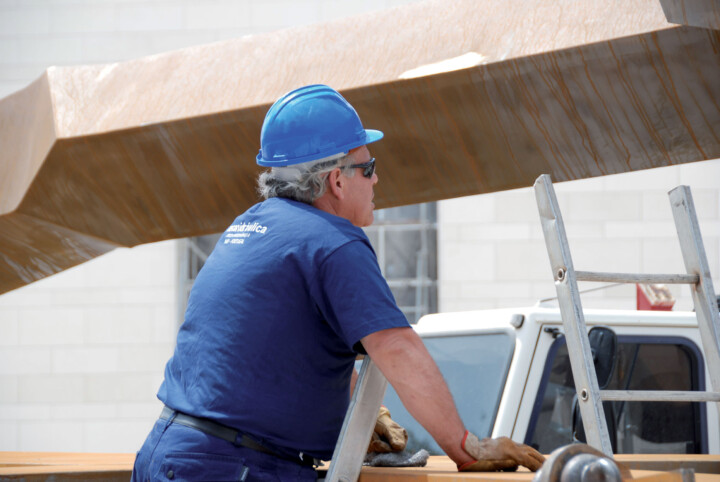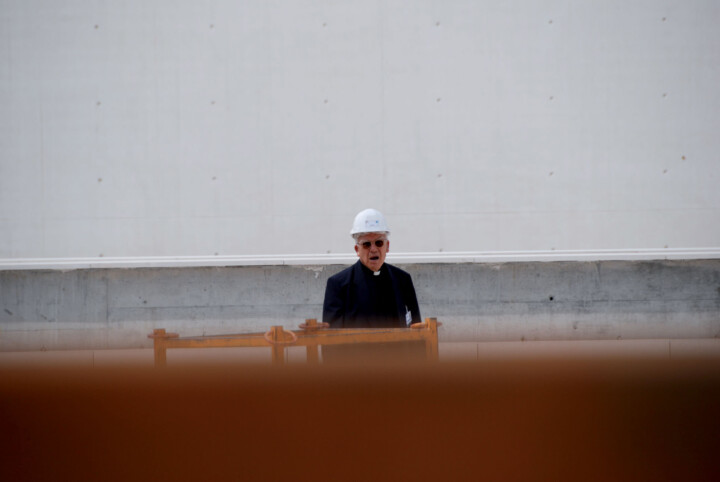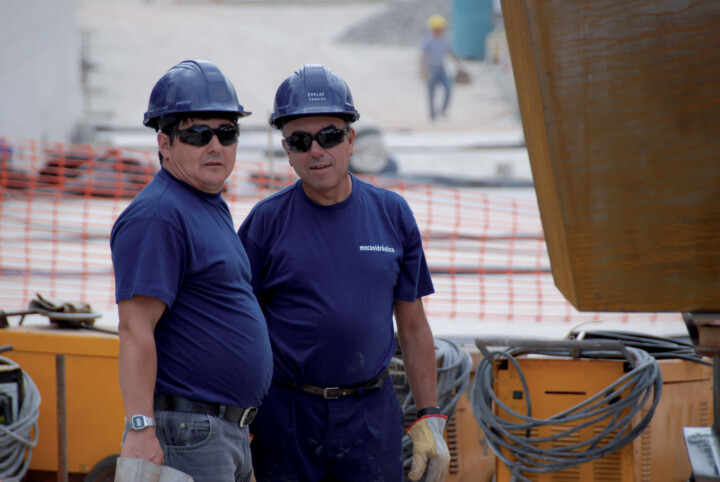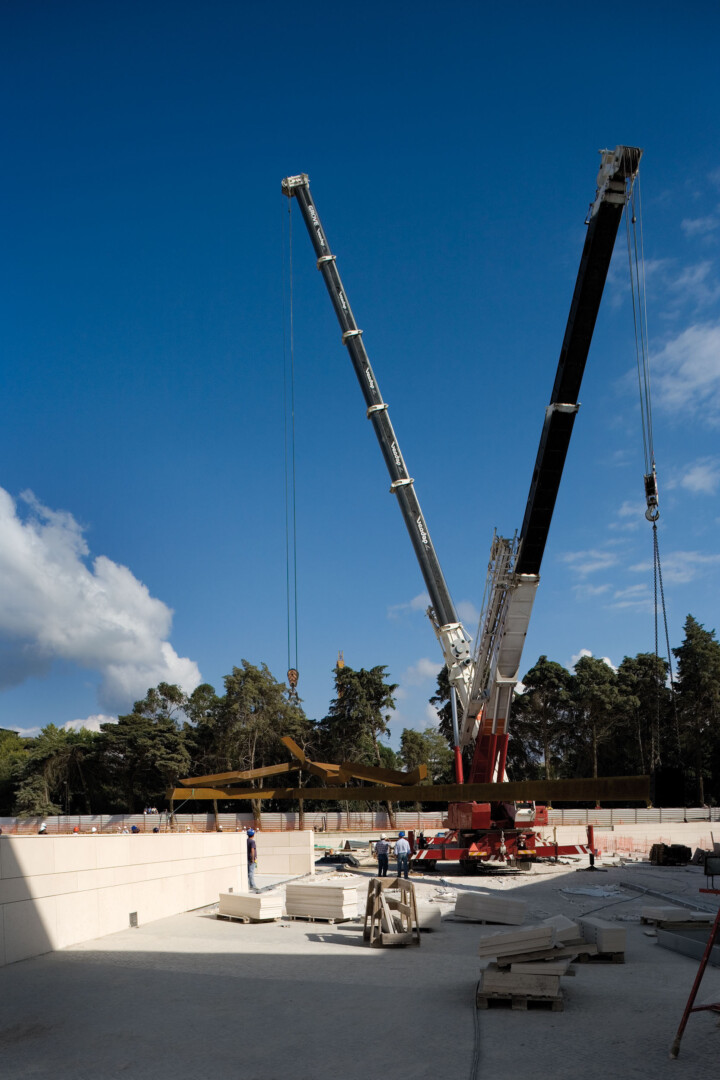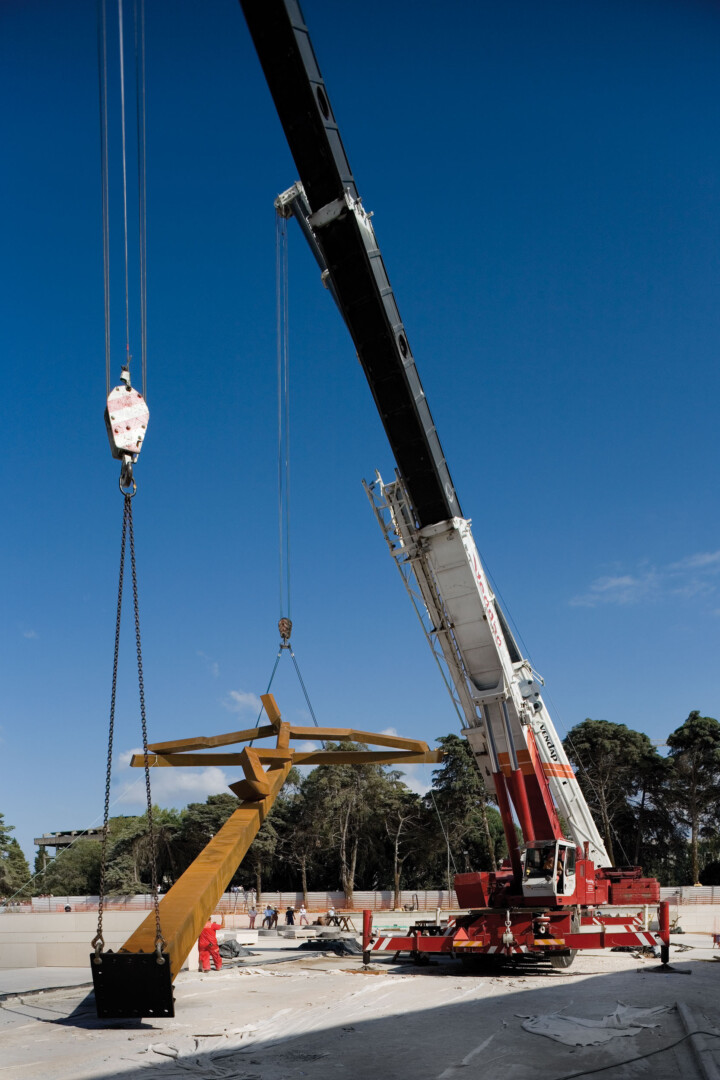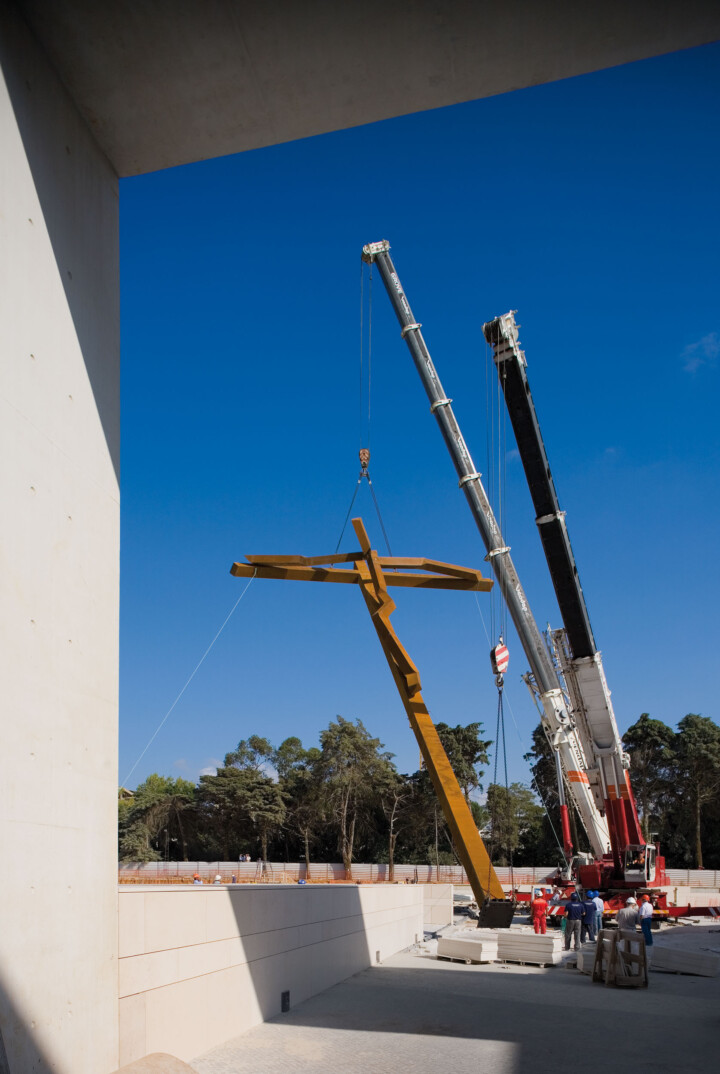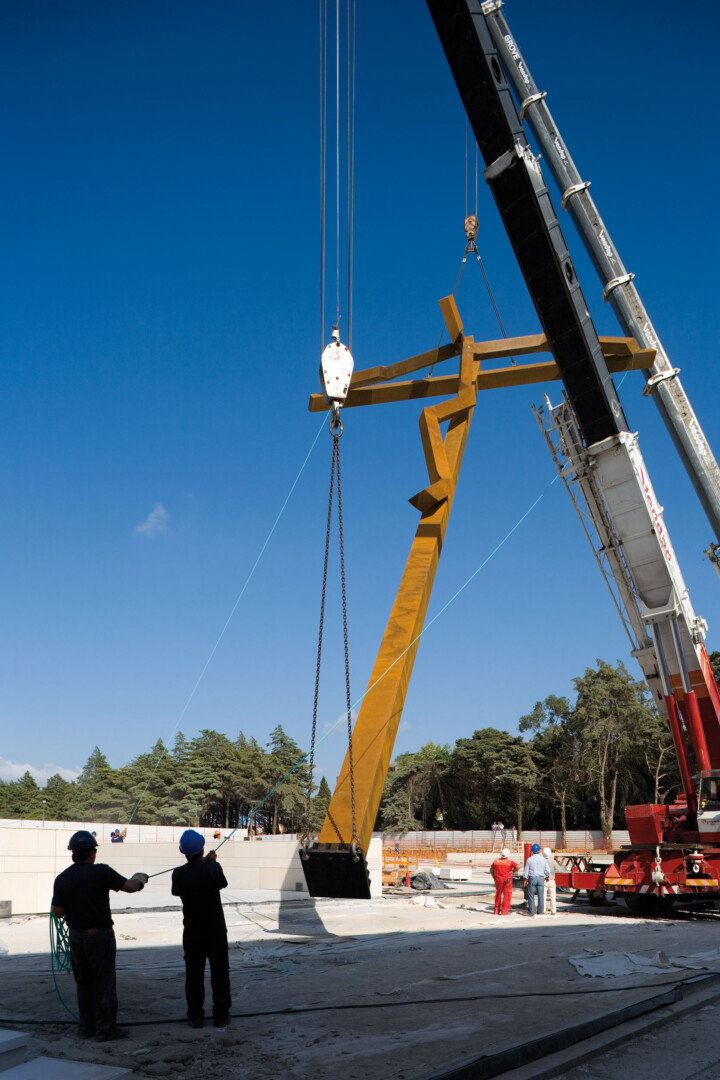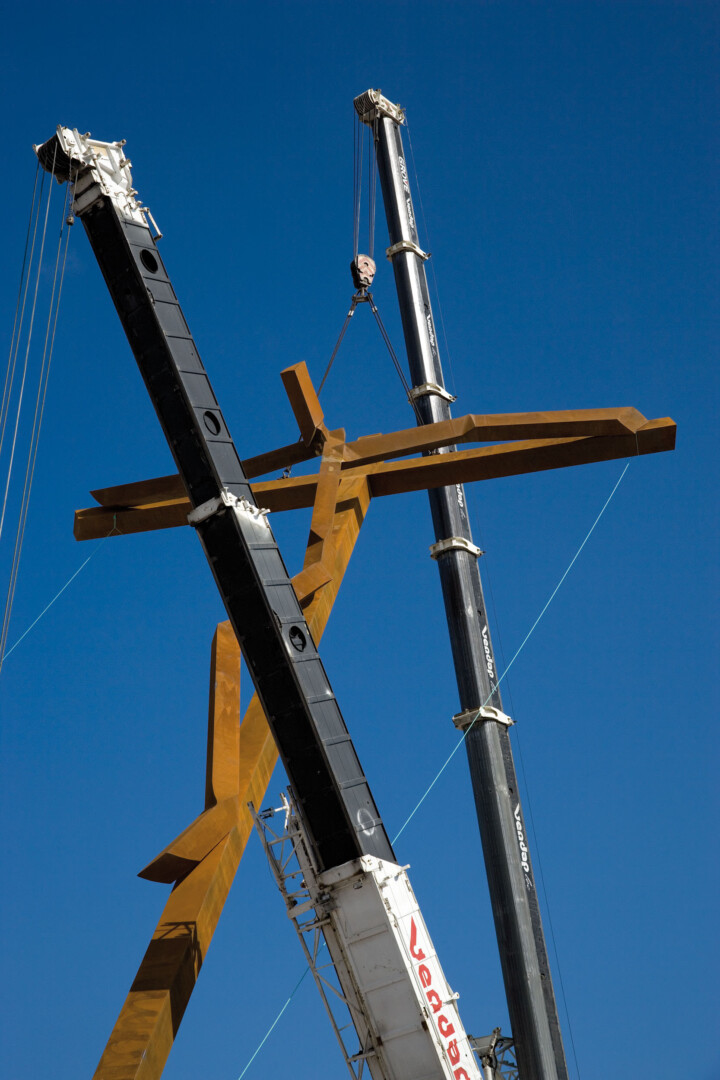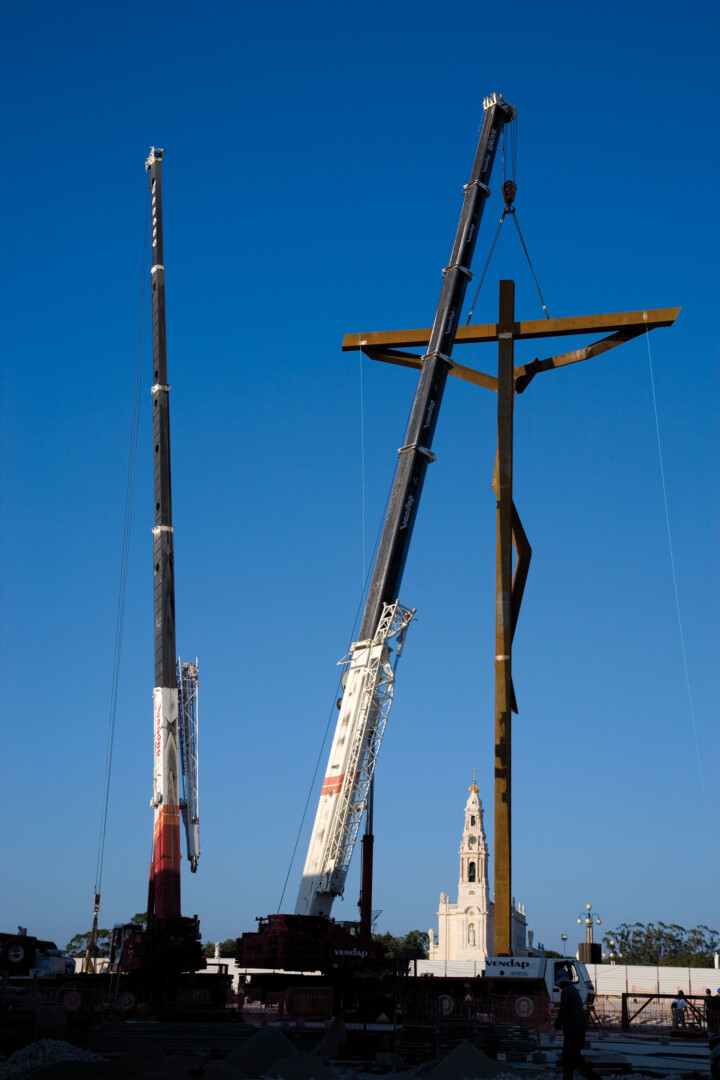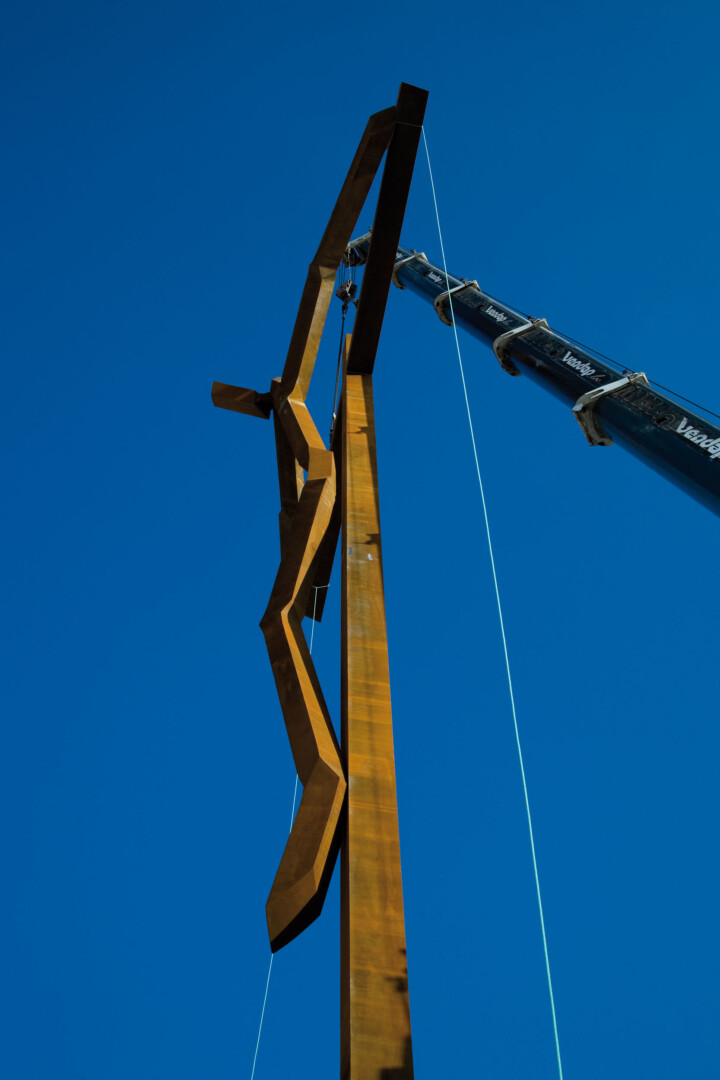The difficult thing is to give expression to simplicity.
Conversation between August Heuser and Robert Schad on 27 February 2008 in the church
St. Stephan in Karlsruhe
Mr Schad, the first question I asked myself when I looked at your crucifix in Fátima was: How did Robert Schad get to Fátima?
Good question! One usually comes to Fátima as a pilgrim. For me it had other reasons: I come from a Catholic family where the accounts of the Marian apparitions in Fatima and Lourdes made a great impression on us children because Mary appeared to children and not adults. I travelled to Fatima myself for the first time at the end of the 1970s as part of a tour guide job I was using to finance my studies. In the early 80s I studied at the Porto School of Art and immediately fell in love with this city and with the north of Portugal, but Fátima was not yet a particular port of call for me. A little later, for the modest amount that earned me an art prize from the northern Portuguese town of Vila Nova de Cerveira, I bought a small water mill, which I restored to live in. Since then, we regularly spend a few weeks a year in northern Portugal. However, this did not lead to my inclusion in the circle of those artists who were to work for the new church in Fátima. About three years ago, the Greek architect Alexandros Tombazis asked me if I wanted to make an artistic contribution to his new construction project of the church “Santissima Trindade” in Fátima. He had previously seen my work in an exhibition in Paris.
There is almost a European cross between Ravensburg, your birthplace, and Fátima and Paris…
and Athens, the city from which Alexandros Tombazis comes. He was instrumental in the realization of the art contributions: in fact, the new pilgrimage center in Fátima also aesthetically conveys an idea that radiates far beyond Portugal and has brought together artists from all over Europe: The Greek architect and his Portuguese colleague Álvaro Siza-Vieira, who created a tile painting over 20 meters wide for the basement of the church complex. The painter Pedro Calapez from Lisbon designed the large main door of the church, Joe Kelly from Canada the glass entrance wings, Ivan Rupnik from Slovenia and Catherine Green from Ireland the choir room. Finally, Czeslaw Dzwigaj from Poland and Benedetto Pietrogrande from Italy created monumental individual sculptures. So my crucifix is part of an international aesthetic concept. But does something connect you to the devotion in Fatima? What interests you about the piety and faith of the people of Fatima? Fátima is a place of pilgrimage, popular with Portuguese farmers and craftsmen. And their lived religiosity has nothing to do with an elitist character of a place of pilgrimage. Fátima is a main place of their religious and cultural identity, where they feel secure and at home. This could also be felt on the opening night of the new church on October 13, 2007: Tens of thousands spent the night on the square, celebrating, singing, eating and sleeping there, and we were right in the middle of it. It was like a gigantic folk festival.
That is, your cross is also made for these people, or for them in particular?
Of course. I certainly designed this cross for these people, but not only for Portuguese. The idea was to create a sign that was as simple as possible in its form, that made intercultural claims, and that did not get lost in realistic details. The difficult thing, after all, is to give expression to simplicity. To bring something to the point, in that it can be this way and no other, is a difficult task, especially in this giant dimension, also in the architectural and spatial context. On the one hand, I felt it was a kind of artistic play with the site, but on the other hand, it was also a profound dialogue with the architect.
Her crucifix stands next to the large new church in Fátima. Steel against stone, horizontal against vertical, line against space. How did you deal with the given architecture and layout of the square?
The architecture, in spite of its simplicity and asceticism, has characteristics that also characterize the shape of my cross. One of the interesting things about this architecture is how people are directed inside the church. A mighty pair of arches leads to the large main portal, which provides direct access to the open, light-filled church hall that accommodates nearly 10,000 worshippers. Nothing reminds of the gloomy spatial character of Iberian church interiors with their mystical light staging. Instead, an unusually bright, almost metaphysical space that invites one to meditate on the mystery of Fatima instead of penitential prayer. The axial view of the altar bundled in front of the entrance widens and dissolves upon entering. The external enclosedness of the structure (the building has no windows) is followed by the light brightness of the interior.
From a distance, the building may be perceived as a disc. It does not impose that it is a church building. A church steeple is completely missing. Here the crucifix in its dimension and materiality is a form partner of the architecture and a signet for the use of the building: The stone, vertically projecting massiveness of the building is dialogically contrasted with the filigree, soaring steel crucifix. Both, church building and crucifix, are mutually dependent and form an aesthetic unity despite their great formal difference.
With this crucifix, of course, you are in a long line in the history of art, but also in a history of spirituality and piety. What moved you when you set out to formulate initial ideas for a crucifix at some point at the drawing table? What does an artist do with all the possibilities one can think of between the early Christian crosses in the catacombs to Joseph Beuys?
Yes, it was not easy to find this form. There is, after all, the typical church sculptor who refers to familiar formal habits when designing a crucifix. The traditional specifications for Christian depictions usually leave little freedom to the artist. The depictions of the crucifixion of each period reflect social conditions and the role of the Catholic Church and faith over the centuries. I have studied Christian art intensively, especially that of the Middle Ages. At the beginning of crucifixion depictions in the 6th century, the beardless Christ was depicted via ancient models of Roman gods; in the early Romantic period, the hieratic, painless type prevailed. Then in the time of the great plague epidemics in the 14th century, the otherworldly transfigured ones gave way to drastically realistic renditions with which people could identify in their suffering. During the Renaissance, interest then turned to the depiction of the naked human body as a symbol of the ideal and the search for the beautiful, soulful human being. After the hyper-realistic and ecstatically exaggerated crucifixion depictions of Mannerism, the Baroque theatrically presented the Passion scenario to the viewer. At 18. and In the 19th century, artists produced little new in terms of this theme. Religion became a private matter. At In the 20th century, the church finally lost its importance as a central patron of the arts.
About the consideration of art history, I asked myself the question, how can and should a crucifix look today. A crucifix cannot be only a symbol of the Western world in view of the fact that most Christians do not live in Europe at all, but in Africa and South America. So it was obvious to deal with Christian representations of the missionized peoples of Africa and South America. The expressiveness in simplicity found in African art confirmed me in foregoing realistic details in the depiction of the body.
These artistic freedoms encouraged me to look beyond common formal dogmas of Christian art. I believe that in a place like Fátima, which is significant for Christians of the whole world, it is important to make a global sign and to create a kind of concentrate as a result of historical reflections and art-historical studies, which reflects and brings to the point the different positive and negative experiences of the individual. Very personal different and ambivalent possibilities of representation are to be evoked, I see this as my responsibility as an artist in this place. It should be a cross from our time into our time. It is not meant to decorate and comment, but to shape a place where seeing and thinking are challenged.
If I understand you correctly, you have found a global visual language with and in your crucifix. But is that enough to bring the crucifix up to date in its message?
So I think the present in Fátima in relation to my crucifix and the whole architecture is first of all the interaction of current arts with the church in a form that I have not found anywhere to the same extent in our time. The direct collaboration between client, architect and artist, which is a prerequisite for the creation of such a total work of art, was almost ideal. The language of the art and architecture created in Fátima is timeless, despite all its topicality, which is why I am sure that it can be appreciated and understood by people of later generations. The deliberate restriction of art and architecture to the existential and essential, even ascetic, is in my view something that can counter a world of sensory overload.
But what is contemporary, what is today about your crucifix?
The observer of the cross quickly notices the material, the steel, which is a sign of our time. Steel is not an invention of our time; think of the great steel frame buildings of the 19th century. Giving this material a humane statement is not easy. However, I try to give the material a language that makes you forget the steel. You can build such a high cross only from steel for structural reasons. We had to make static calculations that would guarantee stability even in the event of high winds and earthquakes. The cross has a gigantic height and is, as far as I know, the highest crucifix in the world. Oxidation gives steel a very natural surface character. Steel is allowed to age like a human being ages. I first had to convince the church clients of this, who preferred a black-blue coated surface. Rust is something alive. In dry climate, the sculpture has a bright red-brown color, in the rain and moisture it is almost black. In addition, the sculpture is made of thick-walled corten steel, the rust layer of which protects the material. Rusting through is absolutely impossible.
Steel is a material that underlies all of your artistic work. He is the constant of your work. A lesser constant is the shape.
How did you arrive at the shape of the Christ corpus on your cross?
When looking at historical crucifixes, it can always be seen that the cross and the body are one. I had originally looked for formal solutions that did without the cross and showed only the body, in order to let the suffering body become one with the cross. This raises a question of content: If the body itself is the cross, it is about the mental and physical state that can become one’s cross. Such a form would probably have upset the religious worldview of the pilgrims too much. Working for the church is different than working for secular clients. The artist must assert his freedoms against iconographic and liturgical frameworks. However, I did not succeed in this case. Thus, a crucifix was created in which the cross is present, but does not serve as a mere support of the body, but because of the constant choice of material becomes one with it, merges with it.
But how do your colleagues react to you doing something like this? If you work for the church, you are quickly pigeonholed as an applied artist.
You are quite right and it happened to me too. I showed my designs to some colleagues and art historian friends and experienced very different reactions, from frenetic enthusiasm to abysmal rejection. For me, the decisive factor was the confrontation with the subject, which has accompanied art history for centuries, in order to set a sign of our time. In doing so, it was important for me to remain true to my artistic language, which I have developed over the past decades.
But they could also have refused. Why did you accept the assignment, unlike perhaps many of your colleagues?
An important task of the artist is to ask questions that are discussed. A good work of art allows for multiple responses and, as long as it stimulates thought, retains its impact. Every person has his own special relationship to a crucifix. For some, it is an object of worship that finds its place in churches and private homes, is worn in processions across fields, meadows and through towns, or as a sign or talisman around the neck. Others perceive it as a threat. That is why it is a very special experience to create such a large crucifix for this place, which is a central place of Christianity.
I don’t want to be indiscreet, but allow me to ask from which personal source or from which personal sign of life beyond artistic considerations does this “very own experience” you just spoke of feed for you?
It is this symbolically charged crucifix form that engages and challenges one in a very different way when working than when creating a free sculpture, as millions of people project their desires, hopes and fears into the cross. During the planning phase, the question kept running through my mind whether the simple believer could even be expected to accept such a form as I was proposing. In addition, I wondered why I of all people, who had never worked for the church before, should make the large main cross for Fátima. My birthday date, which coincides with the commemoration of the birth of Christ, made me wonder and inspired me to look for any other number coincidences. In doing so, I came across the fact that the sum of the digits of my birthday (24.12.1953) is identical to that of the first day of the apparitions (13.5.1917). Of course, this may be pure coincidence.
Viewers are always curious about what the artist actually means, what his attitude to his work of art is.
I would like to keep the breadth of association about my crucifix as open as possible in view of the subject matter. But dealing with the crucifix also means dealing with one’s own cultural roots, and I do this with the means at my disposal. My work is antipodal in nature. In it, constructive rigidity and liveliness, the visually light and the physically heavy are juxtaposed. My work represents the permanent search for overcoming these apparent opposites. You can’t see the enormous weight in my work. This is also true for my Fátima crucifix.
What connects you to the cross and how does it relate to your life? What idea did you develop in this crucifix?
It is derived on the one hand from art history, and on the other hand from what I know from all my experience since childhood. I was baptized Roman Catholic and have had very different experiences with the Church. My childhood religiosity was shaped by a Benedictine priest who was very concerned about our salvation and was a very fatherly and charismatic personality. In the years that followed, doubt and skepticism increasingly shaped my relationship with the Catholic Church because of its ambiguous role, especially during the colonial wars and fascism of the 20th century. In addition, the occupation with other religions, especially Buddhism, opened my world view. For me personally, the renewed current debate about the crucifix means a kind of stocktaking of my attitude to the Catholic Church, which for some years now has been increasingly interfering in social, cultural and world-political discourses for the benefit of people in a way that is appropriate to our time.
You have said that your artistic work is a permanent search for overcoming apparent opposites. What do you mean by that?
I have already pointed out that one of the things I am concerned with in my crucifix is overcoming physical heaviness by apparent lightness. Steely constructed rigidity is to give way to the impression of lively movement. Through the raw and cold steel, content is conveyed that lies behind what is perceived by the eye. In this way, my crucifix can be as a memorial for any overcoming of opposites in thought and action. The ecclesiastical patrons in Fátima certainly did this in their own way: they dared to counterbalance the cult of Mary with the construction of the monumental church of the Holy Trinity and its crucifix. In Portugal, statues of the Virgin Mary clearly take priority over the crucifix in private and public spaces. And with the aesthetics of the newly designed pilgrimage facility, new paths into the future were confidently pointed out. Fátima can be understood as an invitation to follow this path.
How long did the development of the project take from the first contact of the architect to the installation of the crucifix?
I received the request from Alexandros Tombazis at the end of 2005. In 2006, the first meetings took place in Fátima, followed by the project preparations. In 2007, the crucifix was then manufactured in a large steel construction company near Porto. The construction then took place in August 2007. In four parts, the cross was brought to Fátima, where it was assembled and erected in a few days. The appearance was difficult to assess beforehand. My structural engineer’s suggestion to raise the cross from 28 to 34 meters benefited the presence of the crucifix and its weighting against the church building. Together with the Apparition Chapel, it forms a diagonal axis in the otherwise axis-symmetrical square complex with its church buildings. The long-distance effect of the crucifix surprised everyone who worked on the installation. When you approach the pilgrimage center via the expressway, it can already be seen above the rooftops of the city. Now that the crucifix is up, I feel like it has “detached” from me after all the time we spent planning and building it. The Fátima Crucifix has become a public form that no longer belongs only to me, but has been handed over to people who increasingly take spiritual possession of it. Only the future will show whether it can fulfill its task in the way I want and win a firm place in people’s hearts.
